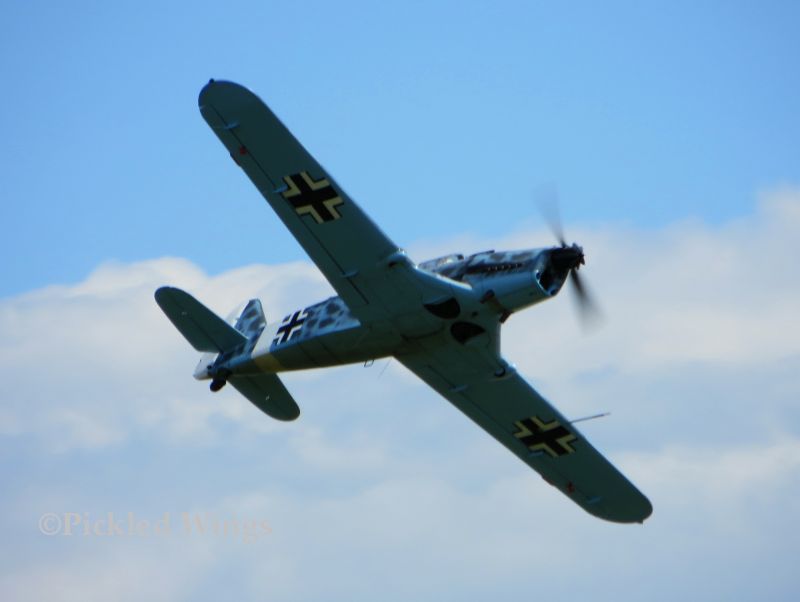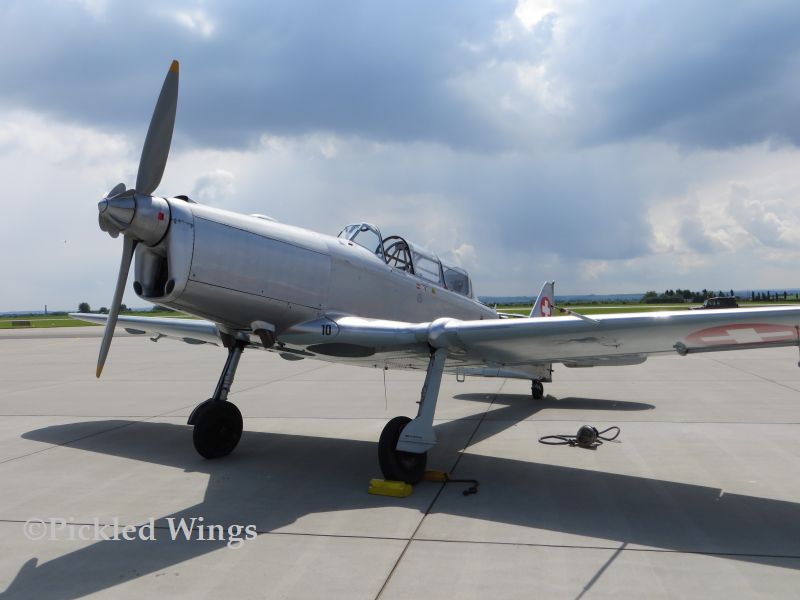A Young Manufacturer Makes Their Mark
The Swiss aircraft company, Pilatus, has become inextricably connected with training aircraft over the decades since they were founded in 1939.
The young company’s first original design was a single seat trainer known as the P.1. Design of the P.1 started in 1940 but did not progress far before it was cancelled.
During the Second World War, Switzerland had purchased a number of military aircraft from Germany. At the end of hostilities, these aircraft became largely unsupportable and the small country purchased North American P-51 Mustang and DeHavilland Vampire fighters to replace them in the immediate post war period. Needless to say, a new trainer would be needed to prepare Swiss pilots for these new aircraft.
The requisition for the new trainer stressed that it had to be designed as quickly and economically as possible. Pilatus took the opportunity to revisit their P.1 design as a basis for the new trainer and use the now inactive German aircraft languishing in Switzerland as sources of parts which could be adapted into the new aircraft in order to shorten design time and expenses.
The salvaged nature of the P.2 can be seen in the nose of the aircraft, which differs very little from that of the German designed Arado Ar-96 training aircraft. This resemblance is quite understandable as the P.2 made use of the same type of Argus engine in the same inverted configuration as the Ar-96 did.
Components and systems of Messerschmitt Bf-108 and Bf-109 aircraft were also used in the design of the P.2; the landing gear and sections of the cockpit canopy are known to have been adapted from Bf-109 fighter parts.
In April of 1945, the prototype P.2 took to the air for the first time and was quickly adopted by the Swiss military. While never exported, it was the first successful design to come directly from Pilatus and began the company’s long association with training aircraft which continues to the present.
Few in Number, Long in Life
The P.2 entered Swiss military service in 1946 and a total of 55 of the type were built in two versions; the P.2-05 basic trainer and its armed counterpart, the P.2-06. While the P.2-06 could carry a variety of guns, rockets and bombs; it was only ever used for weapons delivery training.
A particularly surprising aspect of the P.2 is that it stayed in military service until 1981. That the P.2 had a military career of over three decades in spite of it having been constructed of parts cannibalized from older machines and in spite of its creators introducing a more modern trainer, the P.3, in 1956 is most certainly worthy of note.
The end of military service was most certainly not the end of the P.2 as it experienced great popularity on the vintage aircraft market.
The P.2 is often called upon to represent generic German World War Two fighters in both airshows and in film. It excels in this regard not only because of aerobatic abilities, but also the distinctly Germanic appearance it has inherited from the aircraft it was salvaged from.
Likely the most famous and widely recognized appearance of a P.2 in the role of a German fighter occurred in the 1989 film “Indiana Jones and the Last Crusade” where Harrison Ford and Sean Connery, playing the title character and his father, are attacked by a P.2 painted in period German markings.
Learning More
The P.2 is one of those aircraft that has done quite well in retirement. Around 20 examples were still known to be airworthy worldwide in the early 2020s.
For a relatively obscure type which had only a modest production run and served only one military, it’s not surprising that one has to look around a bit for decent information about the P.2 on the internet. However, information is out there.
This link will take you to the dedicated P.2 page on the website of Classic Trainers, a Czech based P.2 operator.
This link will take you to a short article about the P.2 on the Afterburner Aviation Magazine website.


